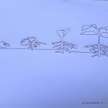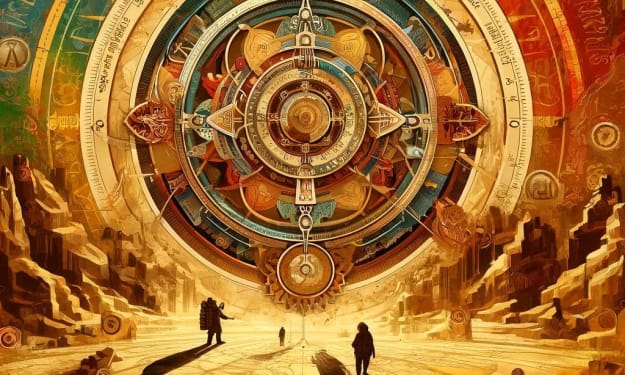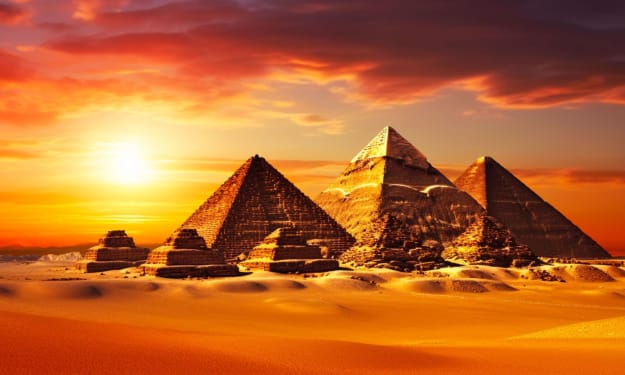Why They Stopped Building Statues on Easter Island
It's interesting to know why.
Easter Island is one of the most isolated islands in the world. Once, it was covered with forests filled with different trees and ferns. But when the first humans came to the island around 400 CE, the forests slowly began to disappear. And starting from 1250 CE, Moai Statues began appearing all over the place. People made them from different types of rock: compressed volcanic ash, basalt, trachyte, and red scoria.
The moai statues on Easter Island have stood tall and proud for hundreds of years. In the past, people put enormous effort into carving these grand sculptures, but then they suddenly stopped making them. Let's try to unravel this mystery.
Easter Island, located 2,500 miles east of Tahiti, is 63 square miles in area. To this day, it remains one of the most isolated islands in the world. The island was once covered in forests filled with diverse trees and ferns. However, when the first humans arrived around 400 CE, the forests slowly started disappearing. Beginning around 1250 CE, moai statues began popping up across the island.
The statues were carved from various types of rock - compressed volcanic ash, basalt, trachyte and red scoria. Since Easter Island is volcanic, these were the available materials for the statue builders. After completing the statues, they were covered in pumice. The statues have distinct expressions, with heavy brows and large noses. Their arms are carved into their bodies. Some have hats on their heads.
There are nearly 900 statues scattered around the island. They range in size - on average 13 feet tall, but the largest reach 33 feet and weigh up to 82 tons. Due to their differing faces, theories suggest the statues represent and honor ancestors, chiefs and other important islanders. However, without clear evidence, their true purpose remains a mystery.
The statues once stood beautifully along the coast, watching over settlements, with their backs to the spirit world of the sea. When Europeans first discovered them in the 1700s, many had already toppled over, even though statue construction had ceased long before that.
Huge effort went into creating these statues. Expert craftspeople spent up to a year slowly carving each statue with basic picks. Teams of up to six transported them to designated spots, some as far as 11 miles away. Carbon dating reveals the statues appeared around 1250 CE, but then suddenly stopped around 1500 CE. The statue builders abandoned their tools wherever they were last used, with only a quarter of the statues reaching their intended destinations. Something happened to make everyone lose interest in the statues.
The main theories relate to deforestation. Islanders may have used wood to transport the statues by sled, rope or logs. But the forests were shrinking - trees took a long time to mature and rats ate the seeds. The islanders needed wood not just for practical uses, but also for carving more statues.
Another reason is that islanders focused efforts on building specialized rock gardens, which were great for soil health. With a growing population, rock gardens took priority over statue building and transport.
Some believe islanders' beliefs changed over time. Initially the statues connected them to ancestors, but later rituals honoring strength and endurance became more important. Islanders started carving seabird images, believing ancestors looked over them through birds instead of statues.
While these theories may be true, overpopulation was the core issue. What was once lush forest quickly became barren land. For centuries islanders relied on forests, but after 1550 agriculture became vital as forests vanished. Tribes that had united to build the statues now competed for resources, toppling the statues to reduce their influence.
Many statues fell naturally through neglect. Some even ended up in the ocean. But there's good news - many have been re-erected for visitors to admire. The first question upon reaching this remote island is likely not how the statues were made or moved, but how anyone even got there.
The ancient Polynesians accomplished extraordinary feats of exploration. From 1500 BCE they used advanced catamarans and outrigger boats to sail the Pacific, starting from Southeast Asia. By 900 BCE they reached Hawaii, by 1200 BCE New Zealand, and by 400 CE Easter Island. They navigated by memorizing islands and using the sun, stars, ocean currents, wave patterns, and bird migrations.
Vikings get too much credit as great sailors. Polynesians relied purely on their deep knowledge of nature's guidance. In 1769, British explorer Captain James Cook hired a Polynesian navigator for his extensive maritime skills. Shockingly, he drew a 2,000 mile map from memory, with 130 islands, recalling 74 by name. Initially dubious, Cook gained immense respect for Polynesian seafaring expertise by journey's end. He recognized them as possibly the world's most widespread nation.
About the Creator
Enjoyed the story? Support the Creator.
Subscribe for free to receive all their stories in your feed. You could also pledge your support or give them a one-off tip, letting them know you appreciate their work.






Comments
There are no comments for this story
Be the first to respond and start the conversation.